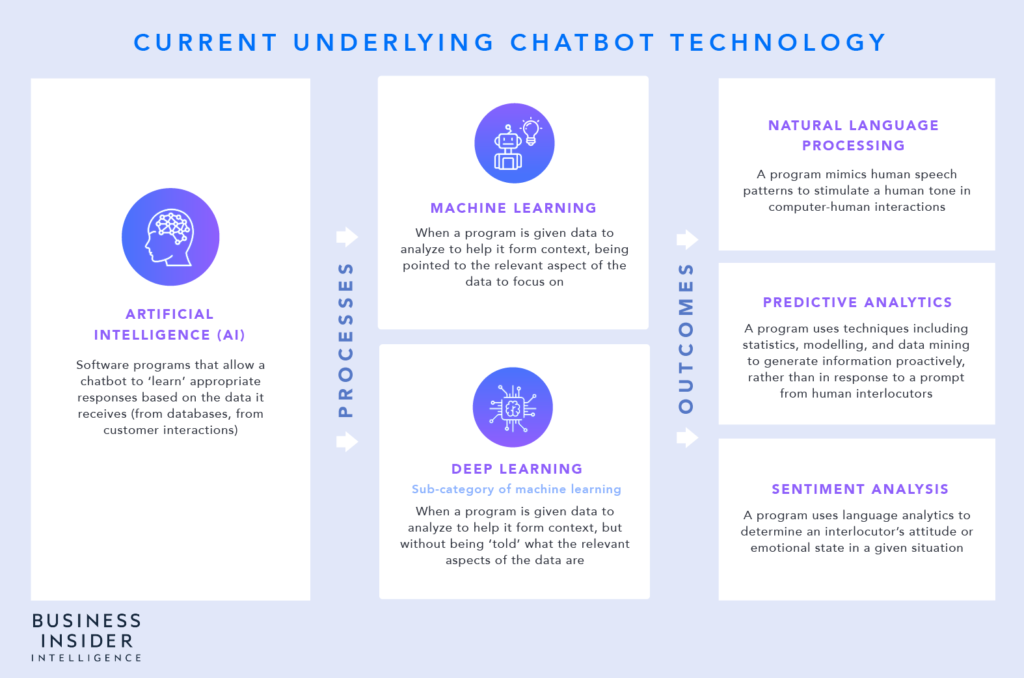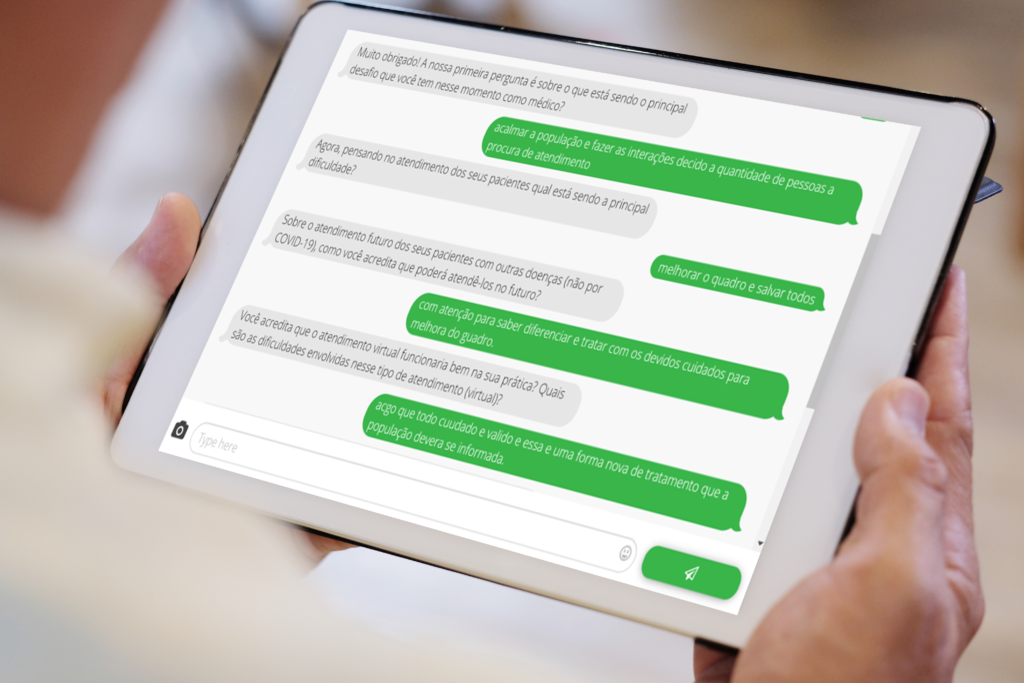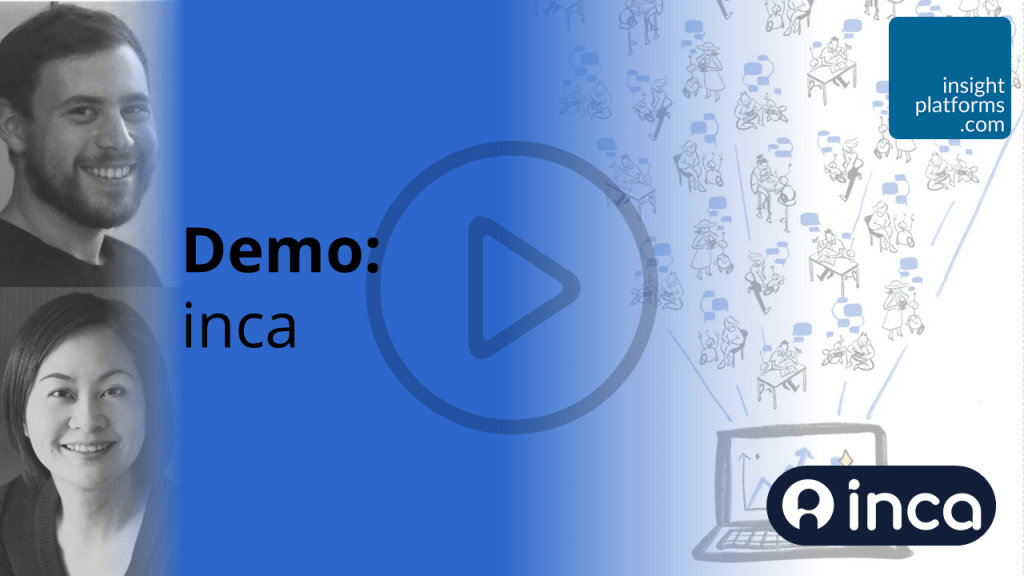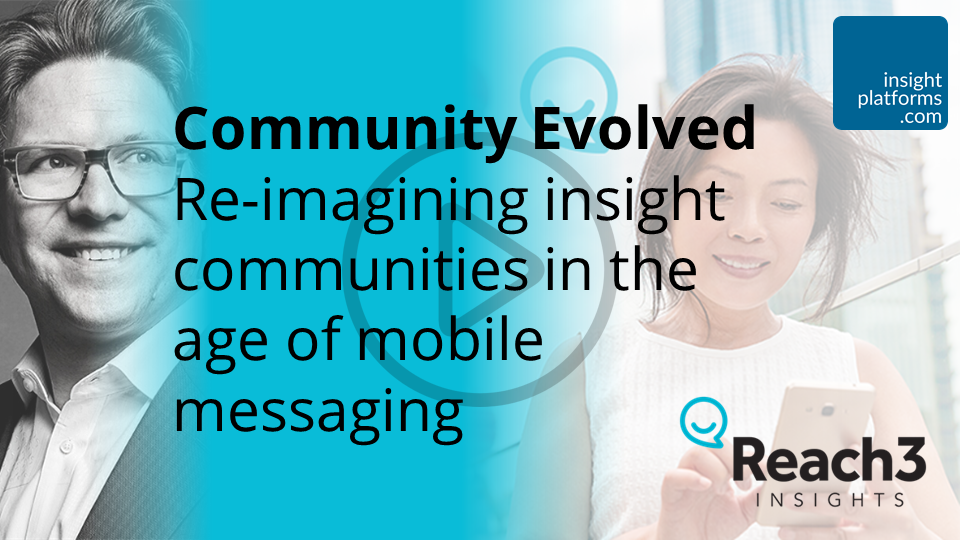An Introduction to Chatbots
Chatbots, Natural Language Processing (NLP), Conversational AI… these terms have been floating around a lot recently. You see chatbots everywhere, from customer service, to online transactions, and now in market and user research.
However, chatbots have been with us in one guise or another for pretty long time. The first NLP ‘bot’ was created by MIT in 1964; it was called ELIZA and was designed to demonstrate the superficiality of communication between humans and machines. ELIZA used a very rigid script and its tone parodied psychotherapists (vague and annoying – see for yourself here).
Since then, conversational AI has come a long way. Now, technology interacts with humans in an almost natural way (barring the odd hiccough here and there). This has resulted in lots of new opportunities.
This is reflected in the market value. According to Business Insider, the chatbot market is projected to grow from $2.6 billion in 2019 to $9.4 billion by 2024.
And with more and more businesses adopting chatbots and conversational AI, it benefits research two-fold. Firstly, consumers will be more acclimatised to using them, making interactions feel less alien. But perhaps more promisingly, is it means that feedback and research will be integrated into the data flow more seamlessly.
Fundamentally, a chatbot is a computer interaction that mimics human conversation.
Here’s how it works:

What are the benefits of using chatbots?
Benefits: Participant engagement
Chatbots can highly benefit respondents, resulting in better quality data.
Here are a few of those respondent benefits.
1. Holding attention
Respondents are becoming increasingly challenging to keep engaged. This is due to several reasons; attention spans have pummetted in recent decades. To add to that, research hasn’t always evolved to reflect this fact (I’m looking at you, 30-minute tracking surveys).
However, by keeping questioning succinct and punchy, it takes out the pain of long and repetitive surveys. Additionally, you can incorporate more appealing elements into chat, such as emojis, pictures and videos. You can even allow respondents answer in video and audio.
This results in a more engaged audience. A study by Rival Technologies found that consumers enjoyed chat surveys far more than they did traditional surveys. Respondents said they were more fun, easier to take part in, and more personal.
2. Youth engagement

The inclusion of fun elements, and the familiarity of a chat interface are more likely to appeal to younger participants. This is key, as this audience have become far less responsive to traditional research. Fewer young people use email, and when they do, the email invites tend to sit ignored in inboxes.
However, messaging services are increasingly used by young people, enabling you to talk to them in their own words, in a medium they prefer. Chatbot research can increase response rates for younger demographics, while maintaining good response in older audiences too. Win-win.
3. On their terms
Not only are you using an interface that feels familiar to respondents, but you’re also giving them the control. Respondents can take part when it is convenient and relevant to them.
They can opt in or out, and have chats when relevant to a task that they’ve just completed. It puts the control back into a respondent’s hands, making it feel less intrusive, and therefore, more appealing.
Benefits: Analysis outcomes
While the other points focus on how chatbots benefit respondents, these are more about the business benefits.
1. Hybrid approach
Using chatbots in research helps you quantify your qualitative data. The AI used for analysis helps make sense of the unstructured data gained from open ended questions.
Most platforms allow you to combine the question types within a project, asking both open and closed questions. This makes it simple to combine both qualitative and quantitative research in one project.
2. Qualitative Research at Scale
Using chatbots allows you to speak to large numbers of people simultaneously, while reducing time spent on moderation.
Additionally, most platforms will have a suite of analysis tools available to make light work of the analysis. They usually include sentiment analysis, theme grouping, choice quotes highlighting, and occasionally audience segmentations based on demographics or answers.
All of this helps give confidence to stakeholders who are cautious of small base sizes. They can feel safe in the knowledge that decisions made based off the findings are backed up with quantified patterns.
3. In depth understanding
Dependent on project design and sophistication of the conversational AI, you can get a lot of depth from chatbot research.
Many platforms will be able to probe respondents on why they answered the way they did. This allows you to get the ‘what’ and the ‘why’ simultaneously.
Additionally, platforms such as inca have projective techniques, frequently used in focus groups, available on the platform. This allows consumers to articulate themselves effectively when faced with challenging questions. They can explain reasons for prioritising certain brand messages, for instance. Or why and how they feel a creative could be improved. These insights would be very challenging using traditional surveys.
4. Integration
Chatbots can be accessed using plugins, which can talk to other data that the business holds. This enables feedback and experiences to fit neatly into overall CRM, resulting in more a holistic view of the customer.
Consequently, businesses intelligence grows and with it, more commercial opportunities can be identified early, and be capitalised on.
What types of projects are good for Chatbots?
There are many uses for chatbot research. Here are just a few of them:
Customer experience
Has a customer just made a transaction on your website? Did they have tickets for an event and you want to know how it went? Maybe they phoned a call centre and you want to understand how the interaction went. There are any number of touchpoints that a customer can have with your brand.
It’s vital to understand how these interactions have gone. Brands need to identify what’s working well with customer service, and where there might be pain points that drive customers to go elsewhere.
By using a chatbot to ask a series of simple follow-up questions, you can quickly get the in-the-moment feedback needed. They can be triggered by key events and can be served via a number of different messaging platforms.
User experience
Getting feedback on how users navigate your site and apps are key to making your digital properties successful.
Using chatbots, you can learn how easy or intuitive users found an app or website to navigate. You can learn what they thought about features, what could be improved, etc.
You can do this through in-the-moment, using chats that appear on the site, or other messaging platforms. This can provide valuable data to optimise your properties.
Product innovation
Chatbots can be a great way of getting feedback on ideas, concepts, or early product trial. You can show participants images and videos to explain ideas, get instant feedback identifying what they like or dislike.
Additionally, if you have numerous concepts to test, participants can select their favourites, then co-create with other participants to optimise and improve on original ideas or even create new ideas from scratch.
Marketing and branding
Like product innovation, chatbots can be a valuable way of testing advertising or brand messaging among relevant customers.
Again, you can show adverts to respondents. They can select elements that resonate, or confuse them, alongside providing valuable qualitative feedback. Furthermore, you can incorporate projective techniques, asking participants to explain why they have prioritised certain attributes or messaging.
Customer behavioural segmentations
You can also use the findings from chatbot projects to segment audiences.
Audiences can be grouped based on experiences they’ve had, or answers they’ve given. This adds a layer of depth, by grouping people who feel similarly about a topic relating to your brand, as opposed to broader attitudinal statements.
Employee Experience
Understanding how employees feel about their workplace and the culture is key for many employers.
Chatbots can ask employees questions to gain insights about their mood and experience. Using these insights, companies can ensure that the workplace cultivates a positive culture that retains good talent.
Public Policy and Social Research
Chatbots can also be used for more serious topics, such as public policy, social research and even humanitarian insight.
Upinion is a platform that brings chatbot technology to people who really need it. They gather instant insights and stories from people in crisis situations. This is used to influence strategy for non-government organisations (NGOs), and promoting inclusiveness and effectiveness of humanitarian support.
What are Chatbots not good at?
Put rubbish in, get rubbish out
Chatbots are only as good as what you put into them. They need a clear questioning flow or discussion guide to account for the different ways people might answer. This ensures that the questions, prompts and acknowledgements are relevant to each participant.
Not all chatbots are chatty
Some chatbots actively engage customers in a conversation. However, others more closely resemble a traditional survey being served through a chat interface. This means that they don’t actually have a dialogue with a participant, but more collect the data they are given.
It also means that if a respondent answers in an unexpected manner, the chatbots may not respond intelligently. Occasionally the chatbot may even respond in a way that is inappropriate to the context. For instance, saying “Awesome – thanks for your feedback”, even if the respondent has said something negative.
Automated doesn’t mean removing the human touch
Chatbots will not replace good quality qualitative research. This is because they can’t necessarily pick up on nuances and make the connections that underpin comments like a person would.
They can often provide a list of priorities for additional qual, identifying key themes that could be explored further.
Additionally, chatbots don’t eliminate the need for the human expertise. Instead, time can be spend on analysis, interpretation, and storytelling. Expertise is also needed on the technology; ensuring that the algorithm is always evolving and improving (particularly eliminating bias).
Case Study: RBC Future Launch Scholarship – inca

In May 2019, RBC – Canada’s largest bank – was launching a programme to provide financial support to youth. It was aimed to better prepare them for the changing world of work. There were internal debates about the use of the word ‘scholarship’ as the programme name. The programme was intended to be offered to all students, but the word ‘scholarship’ might suggest that the programme was only for academically successful students.
They wanted to conduct research to evaluate the risks of using the word ‘scholarship’. With that objective in mind, inca conducted chats with 500 youth across Canada.
The youth selected the top 3 associations from a list of predefined words and phrases. And the results confirmed their hypothesis – the word scholarship was associated with academic excellence.
Prior to this, the participants were asked their spontaneous free associations with the word scholarship. They also asked who would be most likely to apply to the programme. The results showed that while academic excellence was a strong association, generic associations such as ‘money’ and ‘students’ were dominant, proving their hypothesis wrong.
Compared to other named candidates, scholarship was the most intuitive and appropriate on all other measures.
This meant that RBC could go ahead with the programme name with confidence.
The case study shows the importance of hearing the voice of the customer in their own language, and the scale helped with the decision making.
Case Study: Fine Research, CRIS & Delvinia
Fine Research, a market research agency in Latin America, was launching a large quantitative study to understand healthcare professionals’ perspective on the pandemic across LATAM. The project would contribute data and evidence to support the general public, HCPs and decision makers.
They wanted qualitative input into the questionnaire design to ensure that they could examine the problem from every possible angle. However, this was proving challenging within time and budget constraints.

Fine research partnered with CRIS, an AI enabled virtual moderator, using a text chat. The flexibility and convenience of the chat format meant that they spoke to over 80 doctors in just 5 days.
Additionally, the interviews unveiled important emotional dimensions they hadn’t expected. For instance, Brazilian doctors were having a difficult time calming the anxieties of their patients surrounding the pandemic. This insight would have been difficult to derive from a purely quantitative survey. Furthermore, the specific kinds of fears physicians were experiencing became apparent and these insights are extremely valuable in supporting healthcare professionals.
Results from the qualitative phase with CRIS informed the quantitative survey which included over 10,000 healthcare providers across Latin America. This study was a pro bono initiative spearheaded by Fine Research in association with Dynamed, ESOMAR Foundation, and Save the Children.
Tips for Good Chatbot Surveys
Be personal and friendly
One of the benefits of using this method is that you are having a more personal interaction with the consumer. Make sure that the language you use reflects that
Make it mobile friendly
Play to the format that you’re using. That means snappy questions, and the opportunity to make it fun, incorporating emojis, images, videos, and gifs.
Give & receive feedback
Briefly explain why you might be asking certain questions, and thank them for their responses. Make sure that the response is appropriate to the feedback they’ve given you
Other resources
Reading:
For more tips on how to make good chatbot surveys, check out our ebook The Guide to Creating Effective Chat Surveys

We also have another ebook available that gives broader information about AI, called The Guide to AI for Research & Analytics

To get a lowdown of some of the best platforms available for research chatbots, check out our Top 10 Chatbots for Market and User Research

Watching:
Demos:
See what GroupSolver has to offer and how they can help with chatbot projects

inca has some great techniqes for market and user research using chatbots

Webinars:
Community Evolved: Re-imagining insight communities in the age of mobile messaging

10 Trends in Global Insight, which covers conversational interfaces and chatbots, among other things


